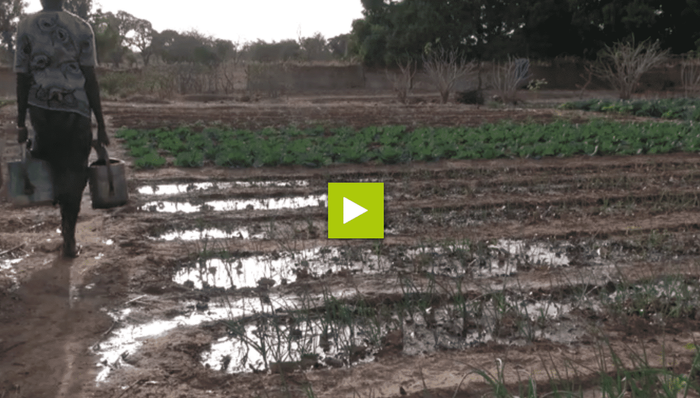In many countries crop production is limited to the dry season but access to water. Access to water allows some farmers to grow high value vegetable crops during dry season.
Drip irrigation saves time, reduces labour, soil sealing and distributes water slowly and evenly to the soil. It also allows plants grow well and produce high yields, saves water and limits the spread of diseases.
Setting up
First set up planting beds that measure 15 by 1.6 m. Loosen up the soils and add well decomposed organic matter then level the beds.
Make a small hole at the bottom of plastic bucket and fit it with a screen to filter water going into pipes from bucket. Install the bucket on support that is strong enough to support the bucket. The support should be on a levelled ground ground and raised about 90cm high.
Place 2 irrigation pipes of 15m each on the planting beds at a distance of 60 cm apart with holes facing upwards to avoid soil clogging the holes.
Transplant on the morning after installing the system and filling the reservoir when the soil sufficiently moist to transplant. Transplant the seedlings at both sides of the hole leaving 30cm between seedlings and mulch after to conserve soil water.
After transplanting, refill bucket once every day .Mechanical or manual pumps ease filling of the bucket with water and reduce watering once the fruits are mature to speed up ripening.
Do maintenance of the system by cleaning the bucket every week or whenever needed to remove dirt that would have accumulated in the pipes.



















